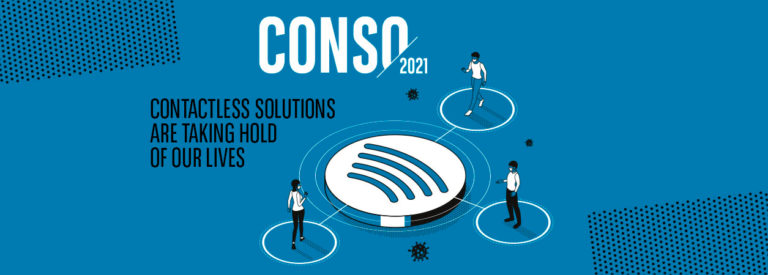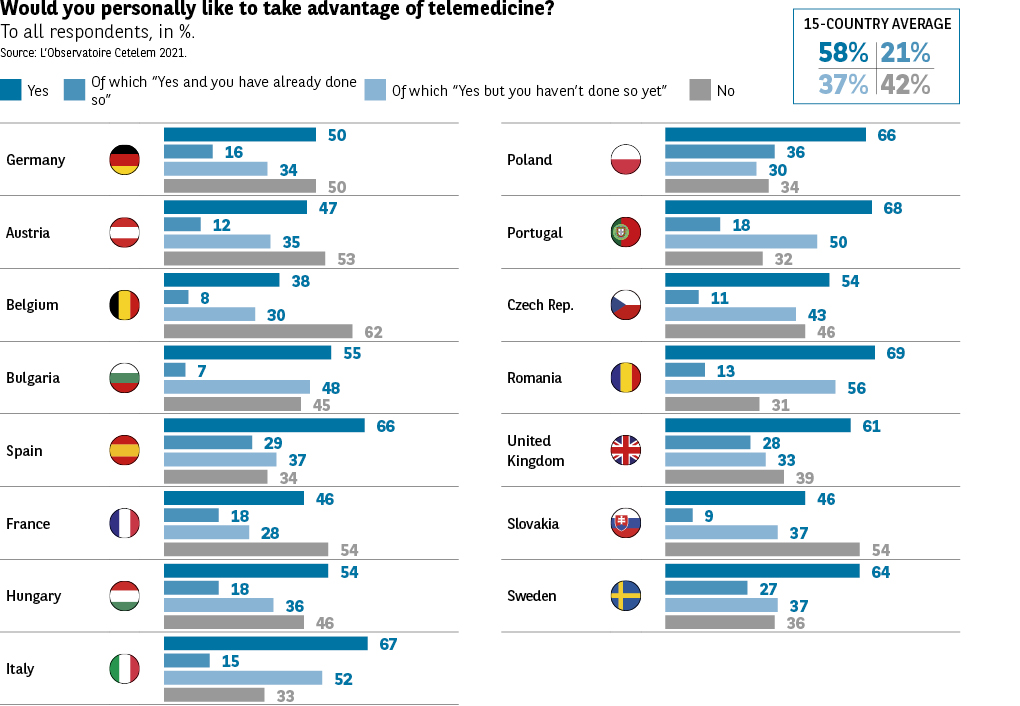Telemedicine


The advent of telemedicine: diagnosis confirmed
Two figures suffice to highlight the degree to which telemedicine has developed. In February 2020, 40,000 remote consultations were reimbursed by social security in France. In April of the same year, it was 4.5 million. The two main uses of telemedicine have been to renew a prescription and to seek advice, resulting in surgeries being less overloaded.
While we are still a long way from the practice being adopted on a vast scale like in China, where some patients go without seeing a doctor for years and where leading groups have taken an interest in e-health, the pandemic has highlighted an appetite for remote medicine that has helped to relieve the pressure on hospitals.
Varying levels of satisfaction from country to country
As we saw with remote education, the opinion of Europeans regarding telemedicine is more than ambivalent. 45% believe it works well (Fig. 46). There is a clear split between the Nordic countries, as well as France, which view it favourably, and the Central European countries, which are much more critical. For instance, only 17% of Bulgarians hold a positive opinion of the practice. What these results seem to highlight is the difference between countries with highly effective health services and those where that isn’t quite the case.
« It’s great for medical consultations. It depends on what the consultation is for and on the doctor. It saves you a journey. It’s convenient. It should be developed more quickly and regulated by doctors. »
… and an equal degree of variability in practice
And yet, almost 6 out of 10 Europeans say they have already tried telemedicine or are interested in doing so (Fig. 47). Romania, Portugal, Italy, Poland and Spain are home to the highest numbers of telemedicine enthusiasts. The Belgians, French, Slovaks and Austrians are the most reluctant to take the plunge (62%, 54%, 54% and 53%).


